Do you ever find yourself without enough storage space in your home? Or perhaps you have important documents or valuable belongings that need to be kept safe? Well, installing a lock on a cabinet could be the perfect solution for you. Not only will it provide an extra level of security and organization, but also add a touch of elegance and style to your cabinets.
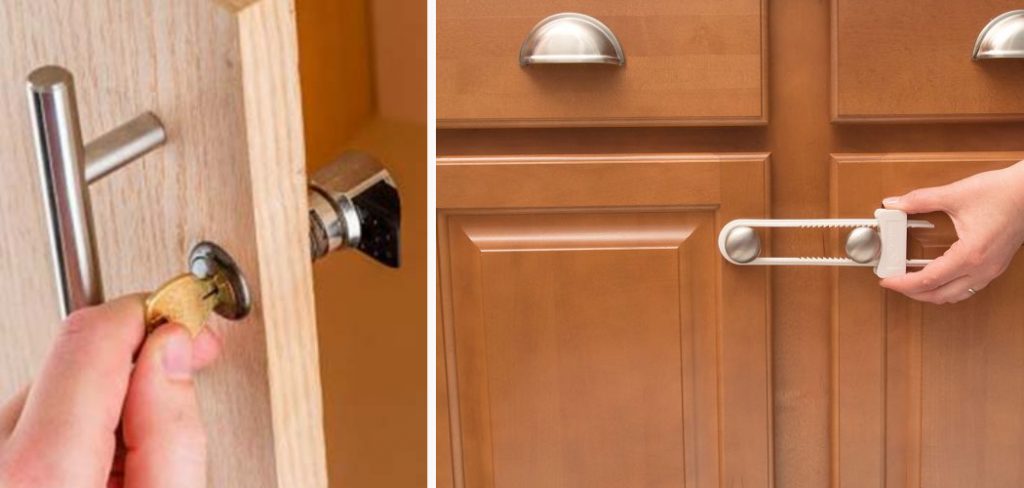
In this blog post, we will discuss everything you need to know about how to install lock on cabinet – from the materials needed, step-by-step instructions, and even different types of locks to choose from. Whether you are a DIY enthusiast looking for your next project or someone in need of practical solutions for storage and safety at home or work, this post is sure to give you all the necessary information. So let’s dive in and unlock the mystery behind cabinet locks!
Tools and Materials You Will Need to Install Lock on Cabinet
- A drill with different-sized bits
- Screws
- Screwdriver (or power drill)
- Measuring tape
- Pencil or marker
- Cabinet lock (there are various types available, which we will discuss later)
- Optional: wood filler and sandpaper for a cleaner finish
Step-by-step Guidelines on How to Install Lock on Cabinet
Step 1: Choose the Right Lock
The first step to installing a lock on your cabinet is choosing the right one for your needs. There are various types of locks available, such as cam locks, deadbolts, combination locks, and more. Each type has its own set of features and levels of security, so be sure to research and select the best option for your specific situation. Choosing the right lock will ensure that your cabinet is secure and gives you peace of mind.
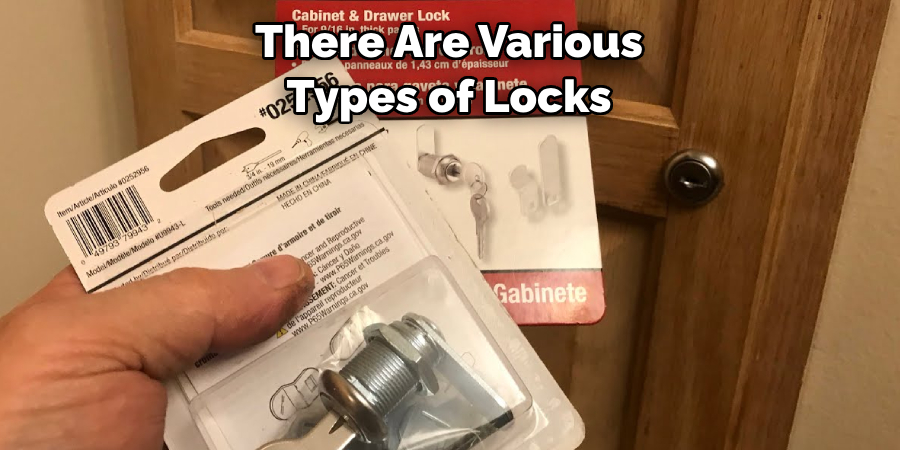
Step 2: Measure and Mark Placement
Once you have selected your desired lock, it’s time to measure and mark its placement on the cabinet. Use a measuring tape to determine where you want the lock to be installed – typically, this would be in the middle of the cabinet door or drawer. Use a pencil or marker to mark the points where the lock will be attached. While measuring, be sure to take into consideration the thickness of your cabinet door or drawer.
Step 3: Drill Holes
Now, using a drill with an appropriate-sized bit, drill holes into the marked spots on your cabinet. Make sure to use different-sized bits if needed–for example, for cam locks, you may need to use a smaller bit for a pilot hole and then a larger one to create the actual hole for the lock. Be sure to drill straight and steady, and check that the holes are deep enough for the lock to fit securely.
Step 4: Install the Lock
With your holes drilled, it’s time to install the lock on your cabinet. Depending on the type of lock you have chosen, you may need to use screws or a mounting plate to attach the lock. Follow the instructions that come with your lock carefully, making sure everything is aligned and secure. While attaching the lock, you may want to use a screwdriver or power drill to tighten the screws.
Step 5: Optional – Fill and Sand
If you want to give your cabinet a cleaner finish, you can opt to fill in any gaps or holes left from the installation process with wood filler. Once it dries, use sandpaper to smooth out the surface for a more polished look. If you prefer to skip this step, you can always paint over the holes or use a decorative cover for cam locks. Make sure to let any paint or filler dry completely before moving on to the next step.
Step 6: Test and Adjust
Before you declare your lock installation complete, it’s essential to test it out and make any necessary adjustments. Use the key or code (depending on the type of lock) to ensure that the lock is functioning correctly. If there are any issues, go back and double-check the alignment of the lock and screws or consider using different-sized bits to make adjustments.
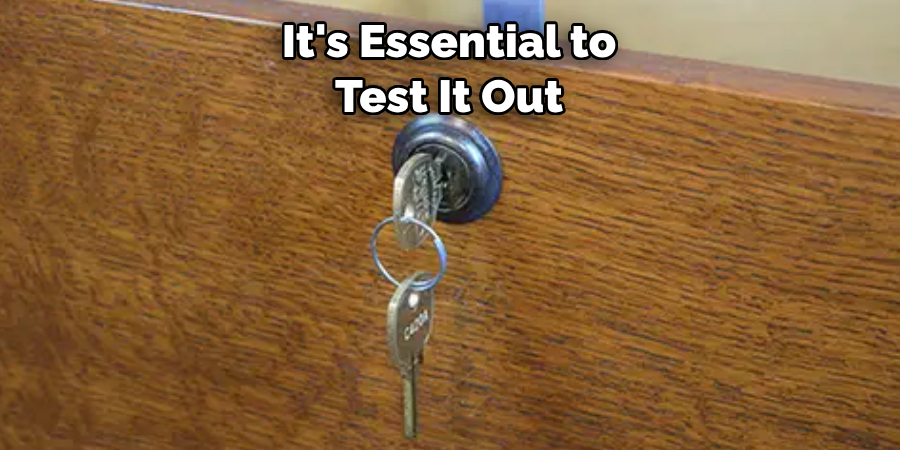
Following these six straightforward steps, you can easily install a lock on your cabinet and enjoy the added security and organization. Now that you know how to install a lock on a cabinet, it’s time to choose the best type of lock for your needs and get started with your installation project! Remember to always prioritize safety when handling tools and consult professionals if needed. Happy locking!
Additional Tips and Tricks to Install Lock on Cabinet
1. If you prefer a more discreet look, consider using keyless or combination locks that do not require visible screws.
2. If your cabinet has thin doors, make sure to use shorter screws to avoid damaging the inner contents of the cabinet.
3. Make sure to choose a lock that is suitable for the material of your cabinet – for example, metal cabinets will require different types of locks compared to wooden ones.
4. If you are unsure about how to install a lock on your specific type of cabinet, do not hesitate to seek professional help or consult online tutorials.
5. Regularly check and maintain your cabinet lock to ensure it continues to function correctly. This includes lubricating the keyhole and making any necessary replacements or adjustments as needed.
6. For extra security, consider installing multiple locks on a single cabinet or using a combination of different types of locks.
7. Finally, always make sure to keep the key or code in a safe place and avoid sharing it with unauthorized persons.
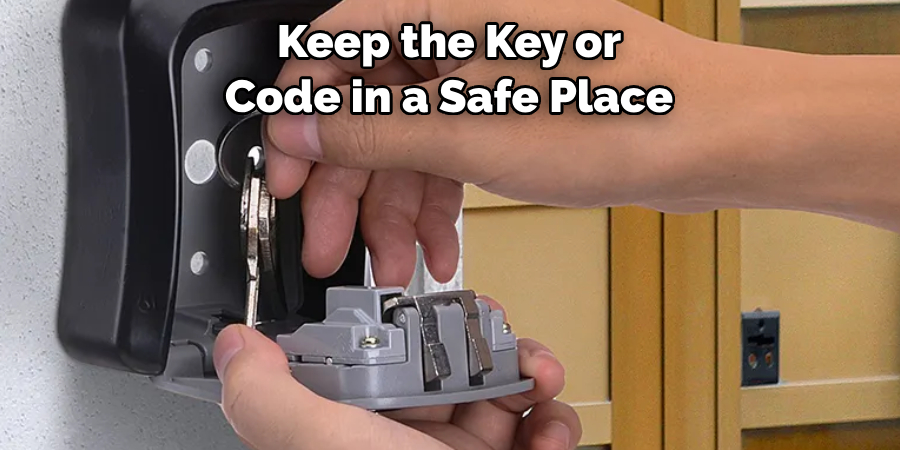
Following these additional tips and tricks will not only help you install a lock on your cabinet successfully but also ensure its continued functionality and security. With the right tools, materials, and know-how, anyone can easily install a lock on their cabinet in no time. Happy DIY-ing!
Precautions Need to Be Followed for Installing Lock on Cabinet
1. First and foremost, gather all the necessary tools and equipment before you start the installation process. You will need a drill, screwdriver, measuring tape, level, pencil, and of course the new lock.
2. Make sure to choose a location for the lock that is easily accessible but not too obvious to potential intruders. Avoid placing it near the edges or corners of the cabinet, as these are often weak spots.
3. Before drilling any holes, double-check that the lock will fit properly on your cabinet. Measure the thickness of the cabinet door and compare it to the length of the lock’s bolt.
4. Use a level to ensure that your lock will be installed straight. Mark where you will be drilling the holes with a pencil, making sure to leave enough space between them for the lock mechanism.
5. Carefully drill the holes according to your markings. Be precise and avoid creating any unnecessary damage to your cabinet.
6. Once the holes are drilled, insert the lock’s bolt into one of them and secure it in place with the included screws. Use a screwdriver to tighten them, but not too tightly as it may cause damage.
7. Test the lock by trying to open and close the cabinet door several times. Make any necessary adjustments if the lock is not functioning properly.
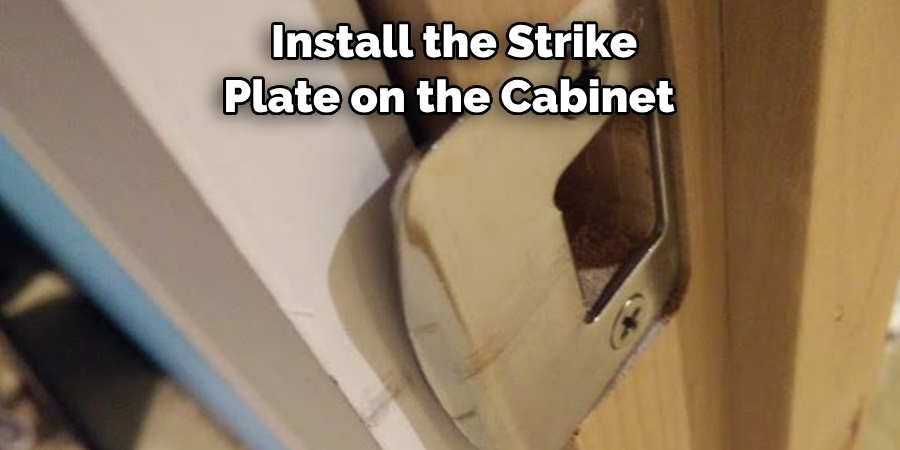
8. If everything looks good, you can now install the strike plate on the cabinet frame. Use a pencil to mark where it should be placed and then screw it in place with a screwdriver.
Following these precautions will ensure that the lock is properly installed and functioning correctly. However, it is important to note that no lock is completely foolproof and can still be bypassed by skilled intruders. Therefore, it is essential to complement your cabinet lock with other security measures such as surveillance cameras or alarms. Additionally, regularly check and maintain your lock to ensure its longevity and effectiveness. With proper precautions and maintenance, your cabinet will be well-protected from unauthorized access.
Frequently Asked Questions
How Do I Know if My Cabinet Needs a Lock?
A cabinet can be locked for various reasons, such as security purposes or to prevent young children from accessing dangerous objects. A good indicator that your cabinet needs a lock is if it contains valuable or potentially harmful items. It’s better to be safe than sorry when it comes to securing your belongings.
What Types of Locks are Available for Cabinets?
There are several types of locks available for cabinets, including padlocks, cam locks, magnetic locks, and combination locks. It’s important to choose a lock that best suits your needs and the type of cabinet you have. For example, if you have a glass cabinet, a magnetic lock may be more suitable as it does not require drilling into the surface.
Can I Install the Lock Myself?
Yes, it is possible to install a lock on your cabinet yourself. However, it may be more difficult depending on the type of lock and cabinet you have. For example, a magnetic lock may be easier to install than a combination lock that requires precise alignment. It’s important to follow the instructions carefully and use the proper tools for installation.
Do I Need to Drill Holes in My Cabinet?
In most cases, yes, you will need to drill holes in your cabinet to install a lock. This is especially true for cam locks and combination locks that require a specific placement and alignment. If you are not comfortable using power tools or drilling into your cabinet, it’s best to seek professional help.
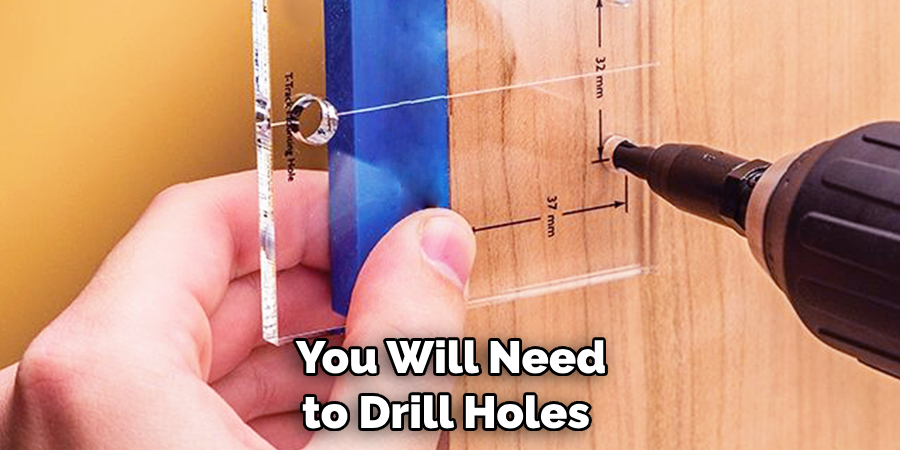
Conclusion
Now you know how to install lock on cabinet and have a better understanding of the different types of locks available. It’s important to choose a lock that best suits your needs and to follow the installation instructions carefully. Remember, it’s always better to be safe than sorry when it comes to securing your belongings.
So, don’t hesitate to install a lock on your cabinet if you feel it is necessary for added security or to keep harmful objects out of reach. Additionally, it’s always a good idea to regularly check and maintain your cabinet lock to ensure it is functioning properly. With the right lock in place, you can have peace of mind knowing that your belongings are safe and secure. So go ahead and install that cabinet lock today!
About
Safety Fic is a distinguished figure in the world of Diy design, with a decade of expertise creating innovative and sustainable Diy solutions. His professional focus lies in merging traditional craftsmanship with modern manufacturing techniques, fostering designs that are both practical and environmentally conscious. As the author of diy, Safety Fic delves into the art and science of Safety Fic-making, inspiring artisans and industry professionals alike.
Education RMIT University
(Melbourne, Australia) Associate Degree in Design (Safety Fic) Focus on sustainable design, industry-driven projects, and practical craftsmanship. Gained hands-on experience with traditional and digital manufacturing tools, such as CAD and CNC software.
Nottingham Trent University
(United Kingdom) Bachelor’s in diyfastly.com and Product Design (Honors) Specialized in product design with a focus on blending creativity with production techniques. Participated in industry projects, working with companies like John Lewis and Vitsoe to gain real-world insights.
Publications and Impact
In diy, Safety Fic his insights on indoor design processes, materials, and strategies for efficient production. His writing bridges the gap between artisan knowledge and modern industry needs, making it a must-read for both budding designers and seasoned professionals.
